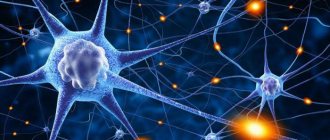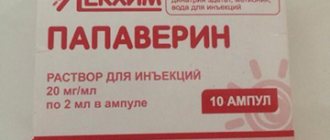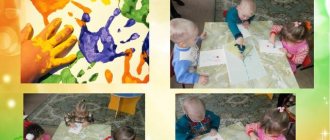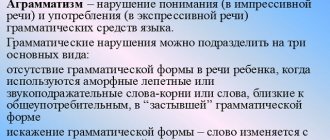In elementary school, many children have difficulty writing correctly. It should be noted that some of them cannot write correctly not because they have difficulties with grammar and punctuation, the problem is more complex in nature, due to unformed higher mental activity. Of course, almost all elementary school students have errors in the text, but in only 12-20% of students the reason lies in dysgraphia. Dysgraphia is a serious mental disorder in children that must be addressed at an early stage.
Children suffering from this disorder make serious mistakes when writing: they mix up words, repeat the same word and mix up letters. This disease is not a sign of delayed intellectual development and can be corrected.
Signs of dysgraphia
What you should pay attention to:
- Frequent phonetic errors (the word - owl, bear - mevet, etc.);
- Errors in very simple words (eg in the word “how”);
- Missing syllables, incorrect endings, etc.
In order to write competently and read normally, it is enough to have average intelligence. However, there is no need to sound the alarm ahead of time if one of the students experiences difficulties during their studies. It is important to understand that dysgraphia does not in any way affect mental development. Such a person adequately perceives oral information and is able to learn. Difficulties arise specifically with visual information. You can often find “mirrored” letters in text written by a person suffering from this disease.
Dysgraphia and dyslexia are similar in nature, so people often suffer from both disorders at once.
Which children are at risk:
- left-handed;
- former left-handers (parents or teachers retrained the child to use the right hand);
- children who started early schooling;
- children growing up in a multilingual family;
- children suffering from absentminded attention;
- children who started studying with a speech therapist early.
Correction of dysgraphia is the prerogative of speech therapists. The specialist will recommend the necessary exercises and teach the correct approach to training. However, it would be useful to turn to psychologists, since the cause of the illness could be: a lack of communication, incorrect or unclear speech of others, a very early start in learning to read and write, etc. The result was psychological trauma.
Causes of writing disorder
The success of learning to write depends on the development of the child’s oral speech: phonemic awareness, articulation of phonemes, grammatical skills and narrative coherence.
Therefore, dysgraphia usually occurs against the background of the following oral speech disorders:
- dyslalia;
- GSD (general speech underdevelopment);
- alalia;
- aphasia;
- dysarthria.
Factors provoking a mixed form of the disorder are classified into medical and socio-psychological. The first include:
- pathologies of the development of the cerebral cortex;
- problems with pregnancy;
- injury to the baby during delivery;
- fetal hypoxia;
- asphyxia;
- infections (meningitis, encephalitis);
- severe chronic diseases of the central nervous system (CNS).
The second group of factors includes:
- bilingualism in the family (when parents speak different languages);
- impaired diction or articulation in family members;
- lack of communication;
- teaching writing too early, when the child is not psychologically ready for it.
In adults, dysgraphia or agraphia usually develops as a result of head injuries, stroke (acute cerebrovascular accident), or neoplasms in the brain.
Types of dysgraphia
Experts divide dysgraphia into the following types:
- Articulatory - acoustic.
- Acoustic.
- Problems of sound analysis.
- Ungrammatical.
- Optical.
Correction of dysgraphia is a joint work of teachers, parents and speech therapist. In order to fully understand the nature of this disorder, one must understand the subject in more depth.
- A person who slurs certain sounds and confuses the letters “r” and “l” in speech is susceptible to articulatory-acoustic dysgraphia. Failure to pronounce a letter correctly often results in it being deliberately omitted. For example, the subject experiences difficulty in pronouncing alternating consonants, which leads to incorrect pronunciation of the words: “inflow - drink”, “transformation - transformation”, “thirty - tick”, “cottage cheese - tolog”, etc.
- If a person confuses letters, the reason for this may be acoustic dysgraphia. Voiced and hissing sounds in one word provoke a person to pronounce and write some words incorrectly.
- The summation of several words into one is the cause of the pathology characteristic of incorrect sound analysis. For example, a person says “kratirier” instead of “beautiful interior.” Often people suffering from this disorder tend to write prepositions separately from words, since they hear a clearly defined boundary between them: “eternal - from eternal”, “pass - pass”, etc.
- The inability to coordinate words is a clear sign of an agrammatic disorder. As an example, we can cite the following phrases: difficult solutions, complex tasks, etc.
- A very common disorder occurs in which children write some letters whose shape is clearly expressed in reverse. The letters seem to be mirrored (I, P, B, b, etc.). This disorder is caused by optical dysgraphia.
These are the main forms of the disease; in practice, there are often more complex variants that combine several forms. Despite the presence of so many forms, the treatment of dysgraphia largely follows the same methodology.
Symptoms and manifestations of dysgraphia
It is difficult to establish an accurate diagnosis of dysgraphia without a specialist. Usually, its presence becomes known at school age, when the child writes letters incorrectly. This is often confused with the fact that the child simply does not understand the grammar of the language, for which teachers reduce grades, therefore, the performance of such a child worsens.
Choose a feedback specialist, study individually or in a group.
Speech therapist help online
Speech therapists, speech pathologists, preparation for school. Distance learning online.
Speech therapist via Skype
Specialized education to help children and adults with speech disorders.
Retraining to become a speech therapist
Errors due to dysgraphia have nothing to do with mastering the rules of the Russian language. The errors themselves are the same, but numerous. Most often, the child makes mistakes when writing combined/separate words; syllables or letters are omitted. Such symptoms should cause concern for parents and teachers at school. Dysgraphia in schoolchildren requires special correctional work from specialists; the sooner such work is started, the faster the child gets rid of it.
Dysgraphia in schoolchildren can also cause poor handwriting that is incomprehensible to adults. Children with this disorder have slow writing speed and severe unevenness. The height and width of letters are constantly changing, even in one word.
Dysgraphia in adults
Dysgraphia is no less common in adults than in children. The cause of this disorder can be a tumor, traumatic brain injury, meningitis, asphyxia, birth trauma, etc.
Dysgraphia in adults manifests itself in the same way as in children: errors while writing, which a person repeats over and over again, while knowing grammar and spelling well. Often people suffering from this disease confuse letters that are outwardly similar in spelling (ъ-ь, в-ь, Ш-ш, Г-р, etc.)
General information
Dysgraphia is a writing disorder in the form of systematic phonetic errors and incorrect spelling of letters. Such errors are permanent and are not related to knowledge of the grammatical rules of the Russian language.
Dictations or presentations for children with this disorder are replete with errors, which reduces self-esteem and interferes with learning, developing, and communicating with classmates. This problem cannot be solved on its own and requires the intervention of specialists, including psychotherapists, neurologists and others.
According to studies, dysgraphia in various stages is detected in 53% of second grade students, 37% of middle school students. Based on these data, we can conclude that this disorder is stable. Depending on the problems and symptoms, various types of dysgraphia are distinguished, also classified by severity.
Pathogenesis and mechanism of occurrence
Writing is a multi-level mechanism, the implementation of which involves different systems:
- speech motor;
- auditory;
- visual;
- motor.
They successively transform articulemes into the form of phonemes, the phoneme turns into a grapheme, and those into a kineme. To develop writing, a child must have a good level of oral speech. It is now known that the pathogenesis of dysgraphia is associated with incorrect or untimely lateralization of brain functions. These processes end approximately by 6-7 years, that is, by the beginning of school.
If there is a delay in lateralization and the simultaneous presence of left-handedness, disturbances occur in the cortical region. With dysgraphia, a child experiences incomplete development of perception, thinking, and memory. The emotional-volitional sphere of the child, visual analysis and other aspects of the child may suffer.
Causes of dysgraphia in children
Before answering the question “dysgraphia—what is it,” you need to understand its causes. This can happen for a variety of reasons:
- birth injuries;
- infectious diseases;
- genetic predisposition;
- neglected child rearing.
Dysgraphia is often accompanied by a number of concomitant diseases that have already been diagnosed in the child. This disorder primarily manifests itself in the incorrect spelling of letters and syllables. Patients with this diagnosis are not able to write correctly, as they have hearing and visual impairments. The child cannot properly process the information received, synthesize it, and analyze it.
Causes of dysgraphia in adults
The reasons for the imperfection of written speech in adults can be provoked by external and internal factors. The main causes of dysgraphia in adults are:
- brain injuries or surgical operations;
- brain tumors;
- some infectious diseases, such as meningococcus;
- inflammatory processes;
- stroke;
- social conditions;
- lack of oxygen in the blood (asphyxia).
Social factors may include pedagogical neglect, incorrect speech of people around the child, little communication between the child and other children and adults, and bilingualism.
A person with dysgraphia makes systematic errors when writing. They are stable in nature, and the person knows all the grammatical rules well.
The most basic reasons for development are insufficient functioning of speech and hearing (analyzers). The child cannot independently analyze speech and synthesize it.
Material on the topic What is bulbar dysarthria
Mastering written speech is directly related to the development of all aspects of speech function, therefore, children with mental retardation, developmental disabilities, phonemic underdevelopment, and sound pronunciation disorders are at risk for dysgraphia. That is why it is extremely important to undergo an examination by a speech therapist by school age and correct existing problems.
Advice for parents whose children need speech and writing correction
Under no circumstances should you scold children with an illness or yell at them. This behavior will only make the situation worse. The subject should feel care and attention from the parents. All work should take place in a comfortable environment. It should be understood that children are under some kind of pressure, which can affect their psyche and form psychological barriers that can limit their future lives.
If a teacher treats students rudely and constantly reproaches them for mistakes, then children can grow into amorphous people who will give up any endeavor at the first failure or mistake.
Those suffering from dysgraphia are not at all incurable. In 70-80% of cases, if you start correcting the disease in preschool age, the problem will be solved. You should be attentive to the child, in which case his problems will be visible at an early stage, which will greatly increase the likelihood of their elimination.
You should only seek help from an experienced speech therapist. It is also necessary to show the child to a neuropsychiatrist who can identify auxiliary abnormalities. Do not neglect the services of a tutor. The tutor will deal with only one student in a convenient environment, knowing the characteristics of his ward and taking them into account during training.
Every case requires a system to achieve the best results; treatment of dysgraphia is no exception. Classes should be carried out systematically, without disturbing the schedule. It is also necessary to determine the causes of the pathology.
Diagnosis of dysgraphia in children
Diagnosis of dysgraphia involves examination by a neurologist, ophthalmologist, otolaryngologist and speech therapist. As mentioned earlier, dysgraphia and dyslexia have similar characteristics, so the help of qualified specialists will help identify both disorders and eliminate them.
First of all, it is necessary to accurately determine whether the illiterate speech of the subject is a consequence of pathology, and not a banal ignorance of spelling rules.
The examination will take place in several stages:
- First, written works will be examined and analyzed.
- Next, you need to listen to oral speech and determine the presence of deviations. During the study, gesticulation and manner of expression are observed, and the leading hand is also determined.
- During the entire examination, specialists examine vocabulary, pronunciation of various sounds, perception of sounds and the syllable structure that the subject makes during a conversation.
- After speech research is completed, writing research begins. The subject first rewrites the printed, handwritten text, then performs a dictation, composes descriptions based on images, reads syllables, words and texts.
When all procedures are completed, the speech therapist analyzes the results and makes a conclusion. Dyslexia and dysgraphia in children, as a rule, are pronounced and their identification is often not particularly difficult for a specialist.
Many may think that the above procedures can be carried out at home, without the help of a specialist, but this is absolutely false. In order to perform the most accurate examination, you must have experience and the necessary knowledge. Otherwise, you can make a number of mistakes, which will lead to an incorrect conclusion and an incorrect understanding of how to treat the pathology.
Correction and treatment
If the violation in question is identified, it is necessary to immediately begin work to correct the writing defects.
The correction program is determined in accordance with the type of deviation and is carried out using the following methods:
– performing exercises that improve memory;
– learning spelling norms with little detail;
– work to increase vocabulary;
– performing written exercises of various types;
- massage;
- prescribing sedatives.
There are many ways to correct writing defects caused by dysgraphia. The most effective among them are the following methods: “word model”, recognition of sounds and letters, Ebbighaus Method, error correction.
The “word model” technique involves the use of cards with an image of an object and a schematic outline of the word. The child is given a card on which some object is drawn and a diagram of a word is drawn. He needs to look at the card, identify the object and pronounce the sounds of the word in order. Then he needs to correlate each sound with a letter, and then write the word.
The method of recognizing sounds and letters involves the child writing a large number of letters. Then the baby needs to underline the words with the indicated sound and write it. After this, the child will need to find these letters in the word and sentences and cross them out. The last stage is to work with drawings, the designation of which contains the sound being practiced.
The Ebbiehaus method involves filling in the gaps in words. The baby is given words that are familiar to him, but some letters are missing. The child needs to fill in the blanks with the correct letters, read the word and write it down correctly.
The error correction method involves finding small errors, correcting them and spelling the words correctly. The child is given a card with a word that contains a mistake, and the word is pronounced correctly. The child should find the mistake, correct it and rewrite the word correctly.
Correction of dysgraphia in school-age children
Dysgraphia must be treated through joint efforts. By working together with teachers, parents and a speech therapist, the child can get rid of this deviation.
If a child has difficulties in speaking, then it is necessary to provide him with systematic practice. Such a special dictation should be different from the usual one. You should pronounce words clearly and indicate punctuation marks. Before starting the dictation, you should clearly read the entire text.
The emergence of negative emotions should be avoided. In a negative environment, children perceive any treatment as something imposed and will subconsciously strive to abstract themselves.
You should not show excessive attention and extreme concern about this deviation. From increased attention to the problem, the child will decide that something is wrong with him and will begin to perceive himself as inferior, which is fundamentally untrue.
It is necessary to instill in the child the mood of achieving a grandiose goal. The child should be praised (in moderation) and encouraged with pleasant surprises, so that he treats treatment with special zeal and is aimed at achieving an excellent result.
Treatment by a speech therapist will follow a different system. Speech therapists base treatment on a special alphabet and a set of specific speech games. The ABC exercise boils down to asking children to put a word together and identify its grammatical elements. This exercise helps you remember the structure of words, the appearance of letters and teaches correct pronunciation.
Next, the speech therapist gives the child an understanding of the differences between hard and soft and dull sounds. The child repeats the words and selects his own that correspond to the required sounds. During the work, the sounds, letters and syllables that make up words are analyzed.
There is a great exercise that you don't have to go through with a speech therapist. The child writes some text (not necessarily from dictation) and pronounces each word. It is very important that the child pronounces the weak beats clearly.
Example: “how much does milk cost?” Indeed, in oral speech this phrase is pronounced completely differently - “how much does a malaco cost.”
Weak beats in this example are sounds that can change during fast speech without affecting the meaning of the word. It looks like a simple exercise, but when practiced systematically, it is very effective.
Diagnostic methods
Dysgraphia in primary schoolchildren is diagnosed by studying oral and written speech. Only after this can an appropriate correction be prescribed. It is also necessary to consult a neurologist, ophthalmologist, or ENT specialist. The degree of formation is determined by a speech therapist.
The examination of a child consists of several stages. First, the child’s vision and hearing and the state of the central nervous system are assessed. Next, an analysis of motor skills and articulation is carried out. It is important to consider whether you are left-handed or right-handed. It is important to analyze the phonetic mechanism, sound pronunciation, the child’s vocabulary, and literacy level. After this, a study of the patient's letter is carried out.
A child with dysgraphia rewrites written and printed letters, words, takes dictation, performs exercises using deformed sentences and other tasks. After this, taking into account all the information received, a speech therapist’s conclusion is issued with recommendations for correction.
Prevention of dysgraphia in a child
Having learned about dysgraphia and realizing that such a deviation can negatively affect the child in the future, automatically leads to the conclusion that the sooner it is detected, the better. It is advisable to determine whether a child has this disease before he begins to study literacy.
There are many exercises that are great for preventing dysgraphia in preschool children:
- Identification of an object from a contour image.
- Search for identical objects in the picture.
- Maze game. A labyrinth is drawn on a piece of paper; the child needs to draw a line with a pen through the entire labyrinth without touching the walls.
- Identify an object by individual details.
- Search for an extra object in the picture that does not correspond to the others (for example, among ovals and circles, a triangle or square would be superfluous and vice versa).
- Correlation of objects with their silhouette. There are special educational toys, for example, a cube with holes of different shapes into which you need to insert figures of the same shape as the holes.
Correcting dysgraphia is not the easiest process, both for the child and for the parents. You will have to do a lot of work and show all your strengths to support the child and help him get rid of the disease. The most important specialists for a child are his parents. Work with the child, enlist the support of a speech therapist and everything will work out.
Eliminating dysgraphia with exercises
Of course, a child suffering from dysgraphia must be shown to a specialist. We need a correct diagnosis of the disease, which will allow us to select the necessary exercises. Parents can also help their baby by providing additional activities. Here are some exercises for such activities:
- correct the text . We take the text and place extra letters in it. The child must find them and cross them out;
- insert the missing letter . Prepare a text with missing letters in words. At first it may be just a few words. Then the text can be enlarged when the child’s skill in finding missing letters is well developed. This game is an excellent prevention of dysgraphia;
- labyrinth _ The goal of this exercise is to learn to draw a line of sufficient length without lifting the pen from the paper. Great for training gross motor skills in children of all ages;
- Let's write a dictation . Start dictating a text consisting of the simplest words. Gradually make the task more difficult. It is important to work systematically and regularly. Then the child’s correct writing skills will constantly improve;
- Let's play letters . Preparing magnetic letters. We make up their words. Then you can write these words down in your notebook.











